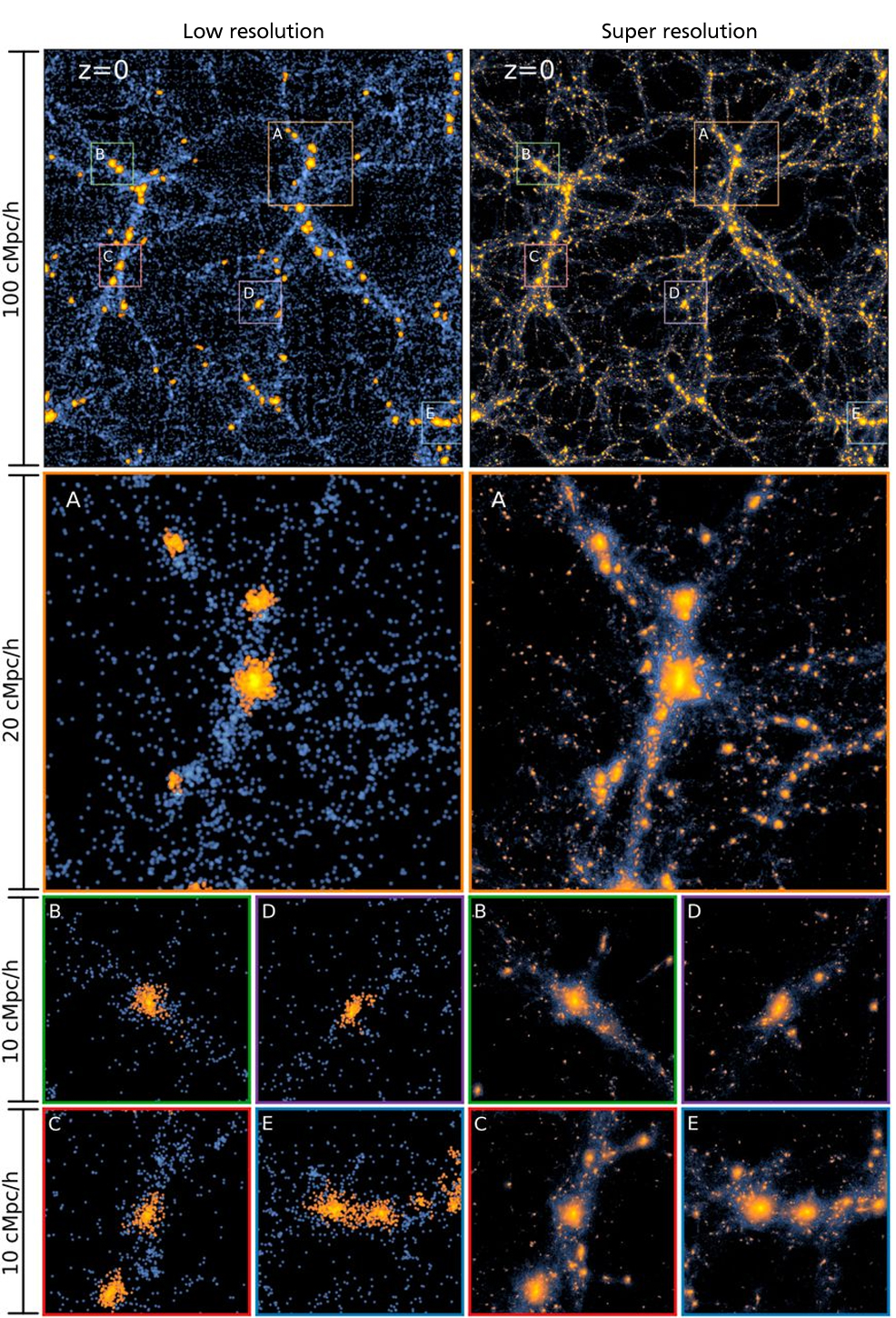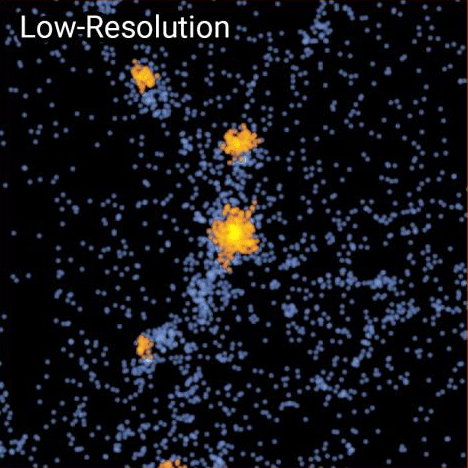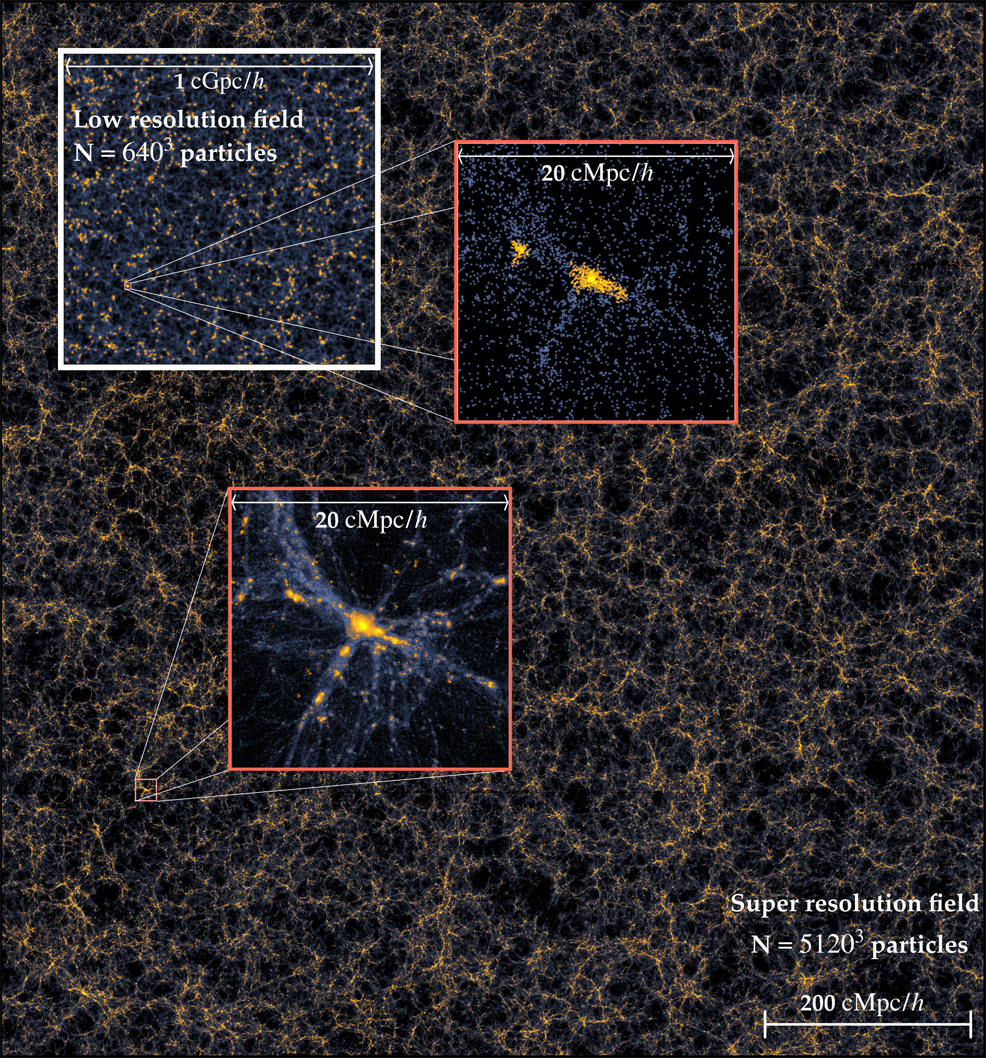
19th May 2021 AI is thousands of times faster at simulating Universe With machine learning, astrophysicists can now simulate vast, complex universes in a fraction of the time it takes with conventional methods.
A modelling technique based on pairs of neural networks that "compete" against each other for the best result could usher in a new era of super high-resolution cosmological simulations. Its creators report their breakthrough in the journal Proceedings of the National Academy of Sciences (PNAS). "At the moment, constraints on computation time usually mean we cannot simulate the Universe at both high resolution and large volume," explains Yin Li, astrophysicist at the Flatiron Institute in New York City and the paper's lead author. "With our new technique, it's possible to have both efficiently. In the future, these AI-based methods will become the norm for certain applications." The new method feeds a machine learning algorithm with models of a small region of space at both low and high resolutions. The AI then learns how to upscale the low-res models to match the detail found in the high-res versions. Once fully trained, it can take full-scale low-res models and generate 'super-resolution' simulations containing up to 512 times as many particles. According to Li and colleagues, the process is akin to taking a blurred photograph and adding the missing details back in, making it sharp and clear. This upscaling brings huge time savings. The Laniakea Supercluster – home to our Milky Way and 100,000 other galaxies – is 520 million light-years across. For a region of that size, containing 134 million particles (about 1,340 per galaxy), existing methods would take 560 hours to produce a high-res simulation using a single processing core. Using their new algorithm, the researchers needed just 36 minutes. They achieved even more dramatic results with higher numbers of particles. For a universe 1,000 times larger with about 134 billion particles, the team's method took 16 hours on a single graphics processing unit. Existing methods would take so long that they wouldn't even be worth running without dedicated supercomputing resources, Li says.
Cosmological simulations are indispensable for astrophysics. They can be used to predict how the Universe may look and behave in various scenarios – such as if the dark energy pulling it apart varies over time. Telescope observations may then confirm whether the simulations' predictions match reality. Creating testable predictions requires running simulations many thousands of times, so faster modelling would be a big boon for the field. Reducing the time it takes to run cosmological simulations "holds the potential of providing major advances in numerical cosmology and astrophysics," says Tiziana Di Matteo of Carnegie Mellon University, who co-authored the study. "Cosmological simulations follow the history and fate of the Universe, all the way to the formation of all galaxies and their black holes." The team's algorithm is based on a generative adversarial network (GAN), the same technique used on the famous website, thispersondoesnotexist.com. This is a way of pitting two neural networks against each other (hence "adversarial") to derive the most accurate result. One network took low-resolution simulations of the Universe and used them to generate high-resolution models. The other network tried to tell those simulations apart from ones made by older methods. Over time, both neural networks got better and better until, ultimately, the simulation generator won out and created fast simulations that looked just like the slower conventional ones. "We couldn't get it to work for two years," Li says, "and suddenly it started working. We got beautiful results that matched what we expected. We even did some blind tests ourselves, and most of us couldn't tell which one was 'real' and which one was 'fake.'" Despite only being trained using small areas of space, the GAN accurately replicated the large-scale structures that only appear in enormous simulations. Not everything is captured in the simulations, however. Because they focus on dark matter and gravity, smaller-scale phenomena – such as star formation, supernovae and the effects of black holes – are left out. The researchers plan to extend their methods to include these forces, and to run their neural networks 'on the fly' alongside conventional simulations to boost their accuracy.
Comments »
If you enjoyed this article, please consider sharing it:
|









